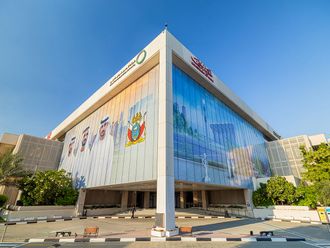Dubai: Nothing’s permanent in the workplace of tomorrow — and developers in the UAE aiming for high-profile office buildings better grasp the emerging reality.
By 2030, 30 per cent of a corporate portfolio will be made up of flexible workspace and “investors will need to restructure their portfolio to profit from this trend,” states a new report from JLL on how technology will impact the offices of tomorrow. Also, in future, businesses may not be needing as much space as “co-working” trends become take hold.
If so, business tenants will need shorter lease lengths. “Tech companies, for example, are asking landlords for non-traditional office space or flexible lease terms; they simply do not know what their business will look like in 12, 24 or 36 months,” the report added.
So, what are developers/investors to do to fit in with the changing dynamic? “Investors will target a new class of ‘platinum prime’ space — top-tier location space designed to suit the behemoths of the new business world,” the report says. “This space will become increasingly scarce, which will make it the least volatile corner of the market.”
According to Craig Plumb, Head of Research at JLL Mena (Middle East and North Africa), “While the Mena region is not currently at the forefront of many of these global changes, the young, innovative and dynamic nature of the region means its real estate markets are likely to adjust to these changes very quickly over the next 20 years.
“Key questions will be raised about the overall quantum of demand, the location and the layout of offices. These questions will increasingly require the attention of investors and occupiers of individual buildings and the planners and managers of cities, as they seek to compete and prosper in an increasingly competitive and rapidly changing global landscape.
“Changes in technology and organisational structure ... threaten to seriously disrupt investors portfolio plans and occupiers’ CRE (commercial real estate) plans as well as how both individual buildings and entire cities are designed, managed and operated.”
Based on project announcements made in the recent past, Dubai’s pipeline of Grade A office space continues to be well-stocked up to the end of the decade. One of the most anticipated will be the ICD Brookfield — which will add 900,000 square feet of leasable space — at DIFC. Also in the vicinity will be the $2.18 billion One Central precinct at Dubai International Exhibition Centre. Other popular office attractions are Dubai Design District and Tecom’s new buildings.
But these are the crème de la crème of what Dubai’s prime office spaces will be. For those landlords or developers whose offerings cannot match up, trouble beckons.
“The adoption of smart technology by building owners has increased significantly and this will drive the success of real estate assets,” states the JLL report. “Buildings that are not fit for changing tenant needs or are unable to integrate future technologies could see waning levels of interest and, ultimately, face obsolescence.
“Smart buildings have, until recently, focused on relatively operational tasks … but new technology is allowing real gains to be made in sustainability and cost management. Through data analysis, owners and managers will be able to optimise occupancy, inform and improve design and facilitate personalisation of space, which will provide a competitive edge.
“Data will cement the link between the strategic aims of a business and a building’s design, making fit-outs and refurbishments quicker and more cost-effective, as well as cutting capital expenditure when a lease ends.”











